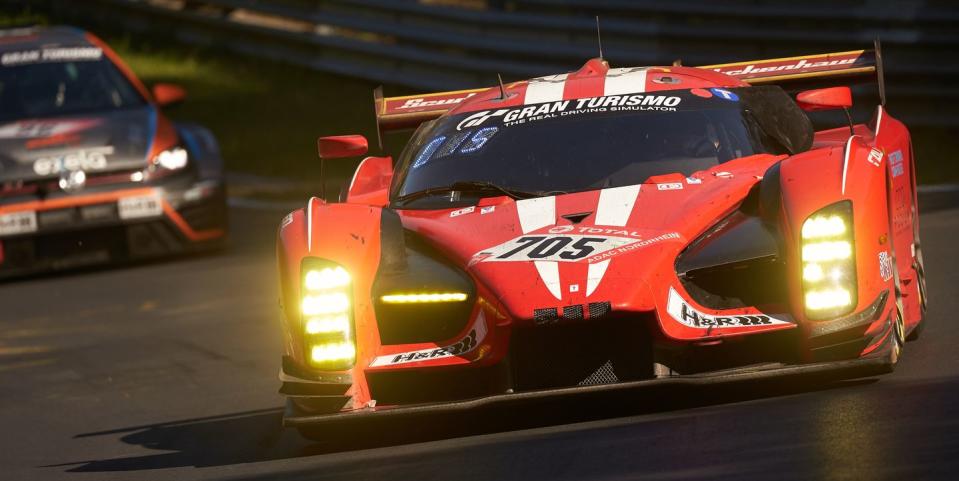Why Racers Race

I've recently gotten into the habit of asking racers what got them into the sport. I assumed there would be an aha! moment, as there was for me. Answers ran the gamut—an amazing race viewed in person, seeing a childhood hero drive, watching a particular movie. The only connection was that those moments wouldn’t make sense to someone who hadn’t had the same kind of wake-up call.
This story originally appeared in the July 2019 issue of Road & Track.
After years of paying for rides and then being good enough to race for free, I finally got paid. Remembering that first occasion—in a prototype, giggling in my helmet—still makes me silly happy. We were testing at Sebring. I would get in the car around 8:00 in the morning, break for lunch, and drive until 5:00. In and out of the pits, testing brakes and shocks, providing feedback to one of the world’s best race engineers. It will always be one of my favorite driving memories.
It wasn’t the money. I’d have done it for nothing, but the why there can be difficult to communicate. Tell co-workers that you drive on a track and you’re likely to get confused looks. Questions about NASCAR. After explaining that you don’t “just drive around in circles” (you also don’t clarify that NASCAR doesn’t drive in circles), you tell them about road courses, maybe explain a track day or a club race. Then, when you have them up against the ropes of confusion, you toss out the clincher: “It’s the most relaxing thing I do.”
“Huh? Isn’t it dangerous? Aren’t you cheating death many times per minute? How could that ever be relaxing?”

But it is, right? On the track, nothing else matters. It’s you, your car, and the pavement. And a few fellow relaxers. If you’re doing the job even half right, you don’t think about work, family, or much of anything besides how to do the task at hand better. That’s focus, and opportunities for it are both rare in adult life and freeing.
Getting better is part of it. Reaching the end of driving, learning everything there is to know, is as likely as reaching the end of the internet. If there’s one common trait among the world’s best drivers, it’s constant improvement—what the Japanese call kaizen. Next, throw in an addiction to g-forces. Remember those self-powered merry-go-rounds from when you were a kid? My older brother called them “barf machines.” Maybe it’s genetic. While they would make him sick, I could ride for as long as someone was willing to spin the thing. G-forces made me smile, twisting my face in more ways than one, yet my brother was miserable. Most racing drivers have that gene. Yet I’ve seen some who have been going to the track for years but never push the limits. They drive on the front of the slip-angle-versus-traction curve, not at the peak. (And never over the peak, where traction falls off, the car sliding too much.) They must like some g-force, but not too much. Maybe it’s skill assimilation, making your body put the pieces together in the machine.
Count to one-thousandth of a second. You can’t do it, right? So how is it possible that I drove two laps of the Nürburgring Nordschleife a few years ago within four-tenths of a second of each other? How many different techniques and skills did I employ, how many movements did I make over the 12.9 miles and 70-plus corners of the Green Hell? It’s impossible to count, but there were likely hundreds, if not thousands, of discrete decisions and motions. When added up, they varied by less than half a second over a period of around nine minutes. It’s hard to wrap one’s mind around that.
Or maybe it isn’t. Maybe the best part is that it seems simultaneously reachable and perpetually, appealingly difficult. No wonder thousands of drivers take on the Ring, which many believe is the most challenging circuit in the world, in everything from supercars to vans and RingBanana Miatas (YouTube it) every year. The same goes for the 1.5 miles and seven corners of tiny Lime Rock Park, or the local kart track. It’s putting all those things in just the right order with the right intensity and at the right time that makes driving so wonderfully challenging, sometimes frustrating, and ultimately gobs of fun.
Ross Bentley is the author of the Speed Secrets book, a former IndyCar 'shoe, and R&T chief driving sage. He lives in Washington State.
You Might Also Like

 Yahoo Autos
Yahoo Autos 